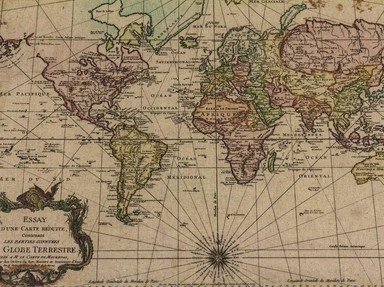Quiz Answer Key and Fun Facts
1. The Chaco Culture National Historical Park was a region settled by the Puebloan people around 9th century AD. Long periods of drought since 1130 AD caused the settlement region to decline. In which US state is the Chaco Culture National Historical Park located?
2. Constructed from stones and mud with branches of palm trees as roofs, Chinguetti was founded in 1262 AD. It was an important city along several trans-Saharan trade routes. The Chinguetti mosque was also found there. Which country is Chinguetti located in?
3. This city is where the ancient Olympics started in 776 BC, and victory brought fame and glory to the winners. The Temple of Zeus that once stood there housed the Statue of Zeus until it was destroyed in a fire. Name the city.
4. Famous throughout the world for its sulphuric springs, this city was part of the Etruscan Civilisation until the Romans came to colonise it in 183 BC. The Porta Romana could be seen there. What was this city?
5. Rallying the troops of Egypt and Syria, Mamluk Sultan Al-Ashraf Khalil drove the Knights Templar out of the Holy Land. All was lost by end of the 13th century AD, save for the island fortress three km away from the Levant mainland. Destroyed in 1302 AD, what island fortress was this?
6. The capital city of the Median Empire was situated at the foot of Mount Avand. Cyrus conquered this city in 550 BC. It later became the summer residence for Parthian kings. What was the name of this city?
7. This was the capital city of the Achaemenid Empire, with its construction starting about 546 BC by King Cyrus the Great. Located in Iran, the tomb of Cyrus the Great was discovered in this city in 2006. Name this city.
8. Among the world's oldest freestanding monuments, Ggantija was built more than 5500 years ago. Believed to be where religious ceremonies were practised, it was also among the world's oldest temples. Where does one go to visit Ggantija?
9. Carnuntum was a Roman camp erected sometime in 6 AD during the reign of Emperor Augustus. Military operations were launched from Carnuntum by Emperor Tiberius against King Maroboduus of Marcomanni. Abandoned during the 4th century AD, which country was Carnuntum located in?
10. Rich in archaeological remains, Quebrada de Humahuaca was a mountain valley inhabited since 10,000 years ago. A pre-Inca settlement, Pucará de Tilcara was built around the 12th century AD and was found in the valley. Which country is Pucará de Tilcara located in?
Source: Author
knightmyst
This quiz was reviewed by FunTrivia editor
Pagiedamon before going online.
Any errors found in FunTrivia content are routinely corrected through our feedback system.

